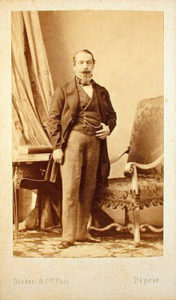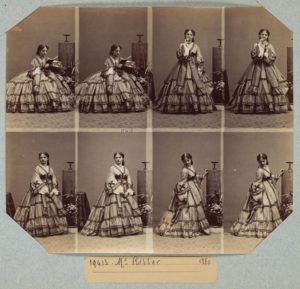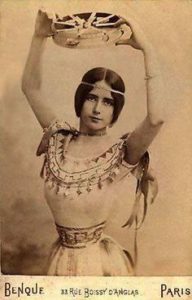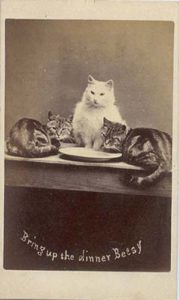By Rachel Mesch 
In May of 1859, Napoleon III headed across French borders to help push the Austrians out of Italy. But first, he stopped to have his picture taken.

Disdéri’s portrait of Napoleon III
Legend has it that on his way to the Italian front, the emperor of France stopped at the studio of Eugène Disdéri, the soon-to-be legendary photographer who had patented a technology five years earlier enabling him to produce multiple photos by using eight negatives on a single glass plate. The resulting images were mounted on paper and separated into rectangular cards, six by nine centimeters, the size of a traditional calling card. Napoleon’s portrait was published in this format, launching the carte de visite craze that would go viral, nineteenth-century style, through Europe and the United States in the decades that followed. Before long, Disdéri was printing between three and four thousand photos a day, and hundreds of other studios cropped up throughout Paris and beyond to help folks share these early selfies with friends and family.

An uncut Disdéri sheet, around 1860
Precursor to Facebook, Instagram and the seemingly endless ways that humans have cultivated photographic technologies to connect socially in recent years, the carte de visite was a veritable fad in the second half of the nineteenth century just as these technologies were getting started. All of a sudden everyday folks could have their pictures taken in the same way as the wealthiest members of society, in yet another example of the democratizing, equalizing forces of nineteenth-century French culture. At the same time, the photograph went from an exotic, awe-inspiring phenomenon (think of how exciting and mysterious it must have been to see life reproduced in this way for the first time) to a flimsy, commonplace object.
![[Album_de_portraits_cartes_de_[...]_btv1b84329315](https://www.wondersandmarvels.com/wp-content/uploads/2016/07/Album_de_portraits_cartes_de_..._btv1b84329315-1-202x300.jpeg)
The sculptor Eugène Brunet, from Edouard Manet’s personal album of photo cards

The actress Cléo de Mérode, a collector’s favorite
Disdéri’s inexpensive technique allowed a form of mass production that made the once incredible daguerreotype quickly obsolete, fading out as quickly as a Snapchat message. Soon celebrities were in on the game, and you could collect images of your favorite actress or writer just as you might now follow them on social media today.

Henry Pointer’s image: cat meme, avant la lettre
Card-o-mania meant you collected your friends and acquaintances in photo albums (bound Tumblrs?), that is, unless you chose to organize them differently: by gender, age, or by profession. For most, the poses are standard, but look more closely and you see timid efforts at self-expression: the tilt of a head, the sideways stance, the choice of clothing. Some posed with their spouses, some with their pets, and every once in a while, you find something much more akin to a status update, the sign of someone who truly understood both the genre and its future possibilities.
